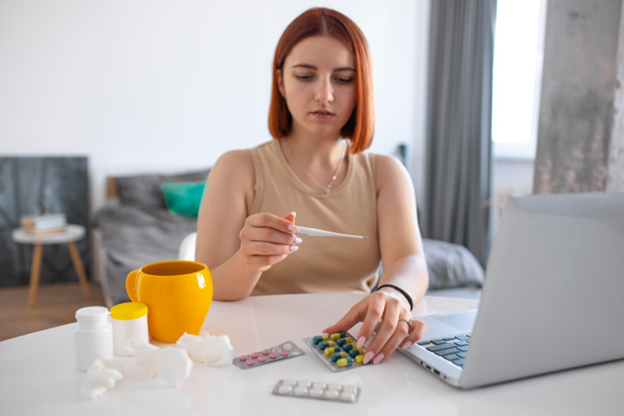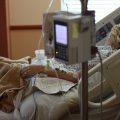Understanding health essentials and first aid in the household is crucial for ensuring the safety and well-being of your family and loved ones. Unfortunate events often lead to emergencies that urgently need care. Even a tiny paper cut needs to be immediately dealt with to avoid infections that could be life-threatening.
You need to have a first aid kit at home to be ready for every unexpected situation. Having a good understanding of health essentials and first aid at home can be critical in emergencies and for everyday health management.

The Core Components
The core components of a first aid kit should include items that are most commonly used in emergencies. Building a comprehensive first aid kit is essential for home safety and emergency preparedness.
Bandages and Dressings
Adhesive bandages, also known as band-aids, are the most commonly used out of all first-aid components. We often deal with sharp items while cooking, cleaning, or working. Even dealing with a paper could end in bleeding. Bandages can stop the bleeding and keep your wound clean. Make sure to keep sterile adhesive bandages in various sizes, as well as sterile gauze pads and rolls and adhesive tape to secure dressings.
Wound Cleaning and Disinfection
Keeping the wound from bleeding is not the only way to treat a cut. The first thing you must do when someone gets injured is make sure their wound is clean and disinfected. Therefore, you must keep supplies to help you clean and disinfect the wound. Make sure your first aid kit includes antiseptic wipes or solutions for cleaning wounds, hydrogen peroxide or saline solution for wound irrigation, and cotton balls.
Tools and Instruments
When using bandages and dressings and cleaning the wound, you will need some tools and instruments.
- Scissors for cutting tape, clothing, or bandages.
- Tweezers for removing splinters or foreign objects.
- Digital thermometer.
- Safety pins.
- Disposable gloves to prevent infection.
- Gloves.
Medications
Having important medication at home is crucial so everyone at home feels safe and healthy. Some mild headaches might cause a lot of discomforts, sometimes family members may get food poisoning, women in your family might have to deal with menstruation followed by monthly cramps, etc.
Every family must have certain medications kept at home for a variety of reasons, but all of the medications must be approved by your doctor. Make sure to include these medications in your first aid kit: over-the-counter pain relievers like acetaminophen or ibuprofen, antihistamines for allergic reactions, anti-diarrheal medication, and oral rehydration solutions (e.g., oral electrolyte packets).
Thermometer
Fevers can be scary, as they may be caused by a variety of reasons. However, you can avoid escalating issues if you can tell the temperature early. Every family should keep a thermometer at home as it helps you find out if anyone needs medications and treatment for fever or if they just have an easily curable cold.
Pressure Machine
High and low pressures can cause a huge discomfort. Without a pressure machine, you may not be able to find out what the problem is. You need to measure the pressure to know which medication you need to take, if you need to lie down, or if it’s time to call a doctor.
First Aid Manual
Although you may have all the right tools and medications to treat various injuries and health problems, you can never be too careful. Make sure to keep a first aid manual at home so you can always be prepared in emergencies.
Adapting Your Kit to Your Family’s Needs
Keeping general healthcare items at home is crucial, however, keeping concrete items to attend to your family member’s needs is just as important. Your family members may have specific health conditions or allergies that can be treated by specific medications prescribed by the doctor.
To complete your set you have to first analyze your family members. Use a notepad and pen for recording vital information. Pay attention to which medications they respond to the best. Go through check-ups every once in a while so you can keep track of your health. Afterward, you can customize your first-aid kit.
Medications
Keep every medicine that your doctor prescribes to you and your family members. Make sure to keep prescriptions with the medications as well so you know which medications to take in specific situations in case you forget. Don’t forget to keep epi-pens, asthma inhalers, and insulin for diabetes. Check the expiration dates regularly as well, so you can replace medications when it’s time.
Baby-Specific Items & Child-friendly Items
Babies need special treatment, therefore, if you have toddlers at home, make sure to keep special medications as well as information about the appropriate dosages. If you have older children at home, make sure to keep medications that are suitable for their age. Remember to keep notes about each medication, when to use them, and how much for different ages.
If you have children living at home, make sure you keep every medication out of their reach.
Senior Family Members
Elderly family members may struggle with various health issues. Make sure you keep all of their medications in your first aid kit. If senior family members in your home have special needs, keep hearing aid batteries and pill organizers at home. Don’t forget to keep a backup cane or walker if elder family members in your home have trouble walking.
Activity-Based Additions
Although you may not have some specific health issues in the family, you might have some habits that could be risky for your health. Therefore, you need to keep activity-based additions in your first-aid kit at home. For example, if you spend a lot of time outdoors, keep blister pads, insect repellent, sunblock, and a compact emergency blanket.
Emergency Contact Information
Your family members might all have different doctors for different issues. Make sure to keep all emergency contacts in one place. Be sure to jot down the numbers of your family pediatrician, local hospital, and specialized medical contacts. Keep the information about specific health conditions of family members, their blood types, allergies, and other important details as well.
Final Thoughts
After you have built your first-aid kit at home, make sure that you keep it in a safe place, within reach of adults, so it’s easily accessible in case of emergencies, but children can’t reach it. Make sure every item in your first aid kit is approved by your doctor and is effective.













